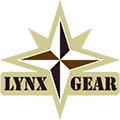The individual first aid kit (IFAK) contains items that can be used to save life in case of injuries and emergency situations. In this article, we explain what should be put in a soldier's individual first aid kit and for what purpose each of its components is intended.
All first-aid kits are assembled depending on the risks of the environment in which the user is or will be. This example contains a general IFAK for a soldier who, while in a battlefield, is exposed to injuries associated with bleeding from gunshot wounds, burns, amputation of limbs, contusions, and fractures from high-energy impacts.
Soldiers can be equipped with different first-aid kits, based also on their role and on what injuries they are most exposed to.
Item and the purpose of its application
- Tourniquet: Effective in stopping heavy bleeding from the extremities. They can be divided into civilian and tactical. For example, the most popular type (link).
- Hemostatic or bleeding-stopping agents: Gauze impregnated with a special agent, granules or powder that promotes rapid blood clotting. For example, granules for a gunshot wound (link).
- Chest Patches or Occlusive Dressing: For covering chest wounds (valved/non-valved) to cover open chest wounds and prevent air from entering the chest cavity. Example (link).
- Compressed gauze for tamponade of wounds: For filling wounds and reducing bleeding. Example (link).
- Emergency Trauma Dressing (ETD): A large, absorbent dressing for covering wounds.
Airway management
- Nasopharyngeal airway with lubricant: To maintain an open airway for a partially or fully unconscious patient. Example (link).
- CPR Mask or Respirator: To protect the rescuer from infection during resuscitation. Example (link).
Breathing management
- Decompression Needle: For tension pneumothorax decompression (trained user only). Example (link).
Blood circulation management
- Elastic Bandage (ACE Wrap): Useful for securing bandages or securing a splint.
- SAM Splint: A multifunctional splint for immobilizing fracture sites. Example (link).
- Gauze: Gauze for dressing wounds or gauze with a hemostatic agent to stop heavy bleeding.
Additional medical supplies
- First aid shears: For cutting clothes and bandages. Example (link).
- Medical tape: For securing bandages and gauze.
- Gloves (nitrile): For maintaining hygiene and protection against blood pathogens. Example (link).
- Sterile dressings: For covering minor wounds or burns.
- Burn bandage or gel: For treatment of burns. Example (link).
- Antiseptic wipes: For cleaning wounds before dressing.
- Alcohol wipes: For sterilizing skin or instruments.
Medicines and items for personal use
- Painkillers: For pain relief (e.g. Ibuprofen, Aspirin) - consult a doctor before use.
- Antibiotic ointment: To prevent infection in small wounds.
- Anti-allergic agent: For use in case of allergic reactions (consult a doctor before use).
- Tweezers: For removing splinters or other small sized items from wounds. Example (link).
- Rescue/ hypothermic blanket: To prevent body cooling. Example (links).
- Marker/Pen: For writing down important information, such as when the tourniquet was applied.
- Instruction Card: For quick access information on first aid procedures.
Storage
- IFAK pouch: Durable, easy to use and easily accessible pouch for safe storage of all medical items. Example (link).
Training
- First Aid Manual or Instructions: Contains instructions for using the medical items in the kit (optional if there is room in the IFAK bag).
Important notes
This summary is informative only. This individual first aid kit list can and should be adjusted depending on your level of medical knowledge and skills, the environment in which you plan to stay, as well as individual needs. It should also be taken into account that in order to effectively use all the medical accessories included in the first aid kit, proper training is very important, especially in the use of a tourniquet, the use of a decompression needle, as well as medical items for maintaining breathing.



